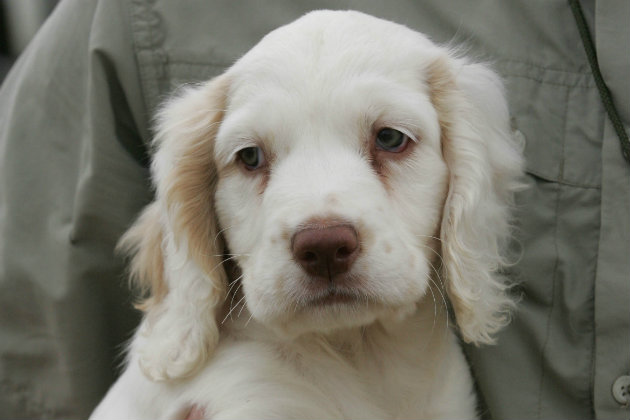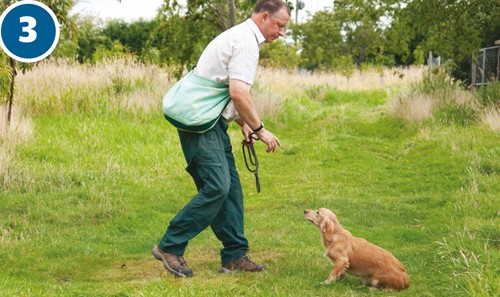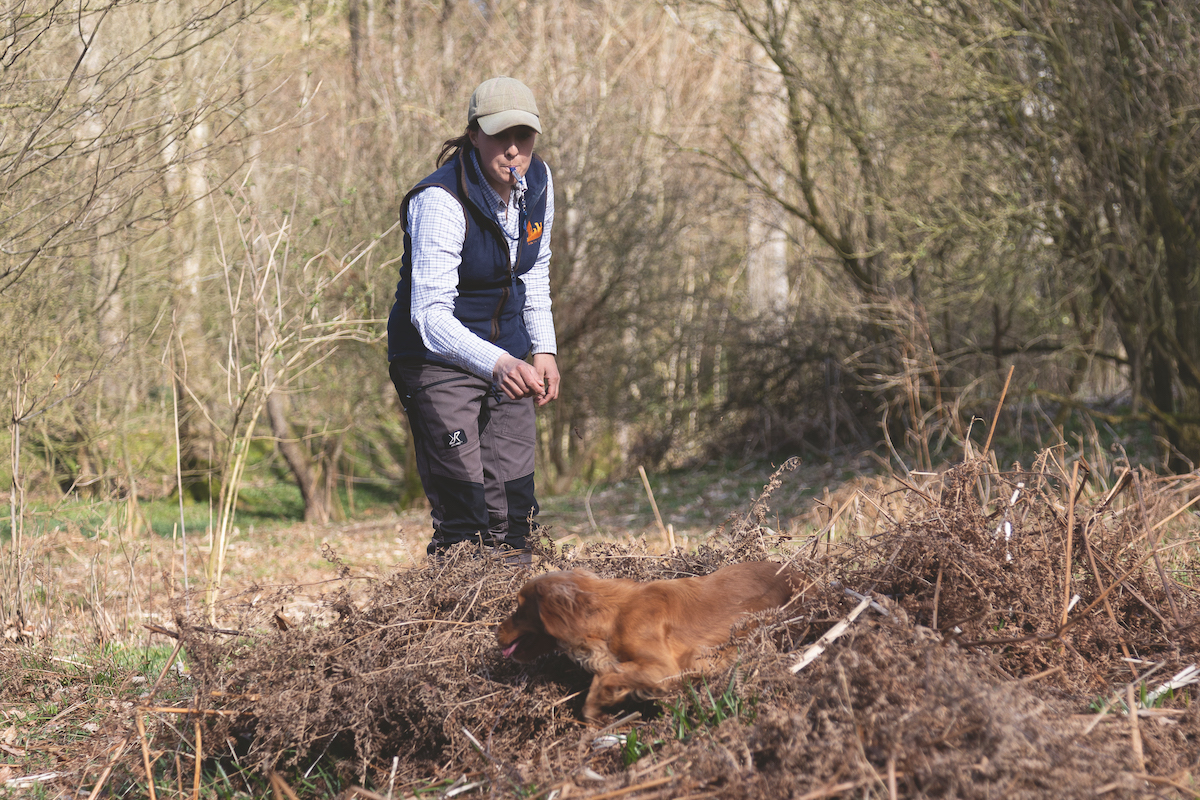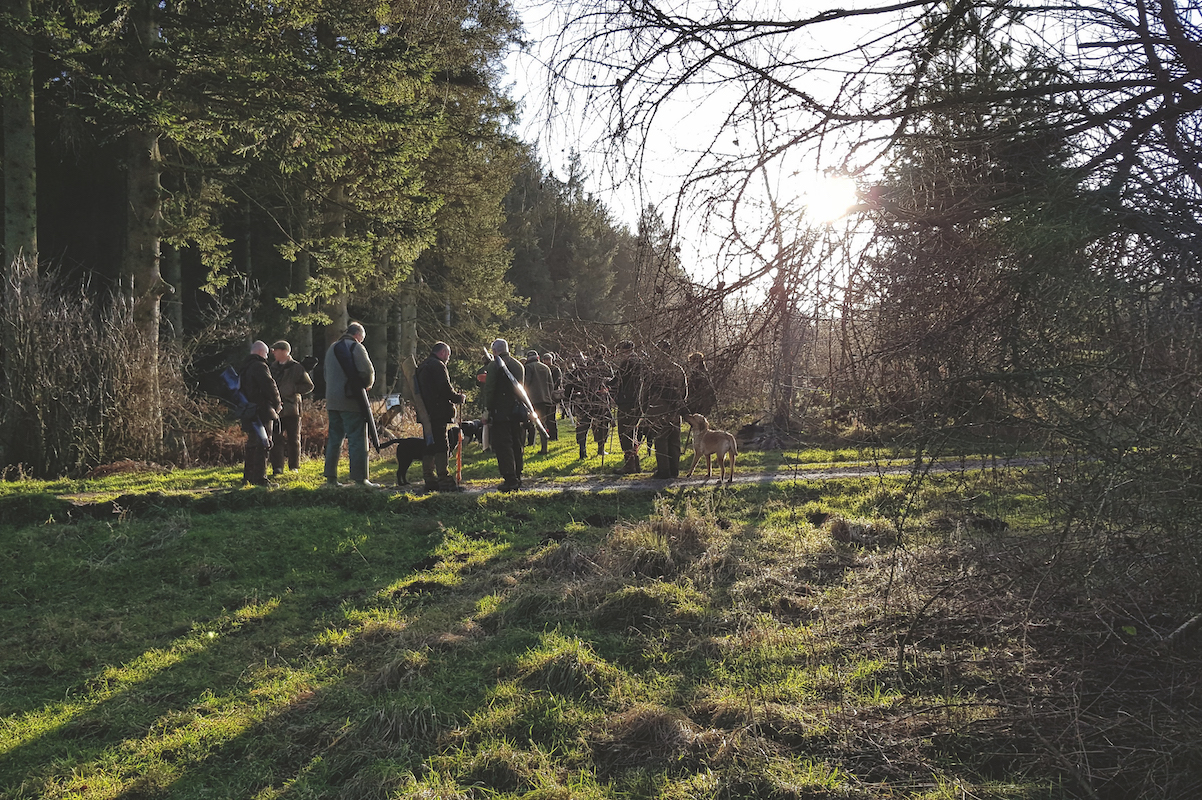What to expect with a new spaniel puppy
Thinking of getting your first spaniel and training it to work in the field? Kennel Club instructor Paul Rawlings explains what new spaniel puppy owners can expect

With the gameshooting season over and spring now upon us, I am sure there are many newcomers to our sport thinking about buying and training their first spaniel through the close season. Rearing and training your own spaniel puppy, and then taking it shooting, can be a very enjoyable and rewarding experience. However, there will be many challenges to overcome along this fascinating journey if success is to be achieved. The hours of daylight before work, and in the evening during summer, will give that extra time required each day to take a puppy through its training, but first you must decide what breed of spaniel to have. This decision should not be based on fancy; to have success later on, you will need a breed that can fulfil your requirements for the shooting field.
The usual function of a spaniel in the shooting field is to quarter ground in front of its handler within gunshot range; to locate any game hiding in the cover and flush it into the open for the Gun to shoot and subsequently be able to retrieve tenderly any game shot, if required, from all types of land and cover, as well as from water or over obstacles.
A versatile and thoroughly trained spaniel puppy
This is typical of the requirements of a roughshooter who, besides walking-up a variety of cover to bag one for the pot, will perhaps do a bit of inland wildfowling, pigeon shooting, beating and picking-up and may subsequently be invited to the odd keeper’s day at the end of the season where the spaniel will need to sit steadily by your side while shooting driven birds as well. You will, then, need a versatile and thoroughly trained spaniel, which, I can assure you, is the wish of the majority of spaniel owners.

If you are looking for a competent shooting companion, Paul recommends an English springer
What breed?
If you are looking for a competent shooting companion, I would first recommend an English springer spaniel (ESS), with a cocker coming in close second. Both these breeds have been improved enormously in the past few decades; they are naturally responsive and intelligent with numerous good working strain litters being produced. When I bought my first cocker in the 1970s, the breed was at a low ebb and most were hard, tough little dogs that were very self-willed and difficult to train. That is not the case today. The breed has been transformed, and if your type of shooting does not necessitate a large spaniel then a working cocker should be the ideal alternative. I would hesitate to recommend a newcomer to buy one of the less popular breeds of spaniel for their first attempt at gundog training. They are less numerous and, aside from Clumbers, which have a definite working type, tend to carry lots of show blood and may not have enough natural talent to make the grade with an inexperienced trainer.
If competition is your ultimate goal then there are endless opportunities for the most popular breeds, the ESS and cocker spaniel. However, while the less numeric Clumbers, Welsh springers, Sussex, field and American cockers do not have the same depth in the individual breeds, there are Any Variety (AV) novice field trial stakes in which they can take part — though against the cocker and ESS they will be challenged to win consistently. The recent success of a Clumber winning an AV stake against springers has certainly raised that breed’s profile, and there are also AV stakes that exclude the cocker and ESS. These, though not numerous, are not heavily subscribed, so there is every chance of getting a run. There are also many spaniel working tests that accept all breeds and this is a great way of assessing progress outside the shooting field. For those who would like credible recognition for their spaniel’s ability, taking the Kennel Club’s Working Gundog Certificate is a useful alternative to competition.
Trust and training
Whatever breed you choose, the training will follow a similar pattern. Building a strong relationship with your puppy is the first essential. The puppy must be encouraged to have complete trust in you — it should see you as its closest friend and guardian. This needs to be developed from the moment you take ownership of your new puppy. The old school of breakers would let puppies develop freely and then put them through “boot camp” later on. You do not want a subservient, cowed spaniel but one that is happy, lively and keen to please you at all times, and that only comes through developing this mutual trust using kind, positive methods.
During this early rearing, from eight weeks to about six months, you will not be able to insist on strict obedience, but your spaniel puppy needs to be well socialised and made worldly wise while avoiding public areas where it can easily get into mischief. I ruined my first puppy by allowing it to free-play with other dogs in the park when I took it out for exercise. It soon learned that staying close was not important and it would ignore me completely, and I could do nothing to stop it. The close bond was certainly not formed with that one. You will want your spaniel to hunt in range of the gun and that limit should be established right from the start by avoiding situations that will teach it to pull away. This early period is also the time to get it used to wearing a collar or light lead — if it is done correctly it will never learn to pull. Seek advice from a trainer before you start rather than after problems have arisen. The phrase “prevention is better than cure” springs to mind.

There are AV stakes that minor breeds – such as the Welsh springer – can enter, but these tend to be dominated by the ESS and cocker
A puppy’s natural ability
You can also assess the puppy’s natural ability during these early weeks. Will it pick up and carry a ball or small dummy; does it deliver naturally to you or does it keep out of reach? However it reacts, do not bore it through lots of play retrieves; just use the occasional one to keep its interest alive. Watch how it moves around during exercise — does it have its nose on the ground or does it run about with its head up? If the latter, try dropping a few titbits in light cover and see how it soon begins to drop its nose to the ground. How does it react to strange objects, new places or other people and animals? Is it happy to get in and travel in a vehicle? If there are any issues then deal with these by gradual exposure, distraction and positive rewards to overcome any uncertainty or fear. Observing everything it does during this early period and gradually eliminating simple problems will help later on, when you are both working through the more advanced spaniel training. Your puppy will need to be confident when you start going to training classes.

If your type of shooting does not necessitate a large spaniel, a cocker is the ideal alternative
When I began with my first gundog I made every mistake possible by not seeking advice from the experts. My second dog was better but I soon found that books did not give enough help and that the services of experienced and knowledgeable trainers were definitely required. In those days help seemed difficult to find but there is no excuse now. There are large numbers of clubs and individuals running training classes; some accept all breeds of gundog but many specialise in certain breeds or sub-groups. There are more opportunities for retriever owners than for spaniels, but there are some very good ones. The Kennel Club website is a good place to start — its “Find a club” and “Field trial” sections list clubs that run training classes. As with obtaining a good puppy, word of mouth is perhaps the best way to ascertain which clubs will suit your purpose best.
Depending on the breed you have chosen, there are many opportunities to compete or prove that your spaniel is a worthwhile shooting companion — once, of course, it has undergone all that important training. The services of a competent instructor are essential and where better to start than your nearest Kennel Club Accredited Instructor, who will be able to help with the most important foundation of all training: teaching the puppy to be an obedient companion. Then, through the network of instructors, they should be able to refer you to a gundog or spaniel expert or to a Kennel Club-registered club that specialises in more specific spaniel training for the field.
Sprocker or cocker spaniel? How can you tell them apart?
Should you get a sprocker or cocker spaniel? I admit to being a fan of sprockers as I like their…
How to train a spaniel puppy that lacks confidence
Gundog training: Tread carefully when training a spaniel puppy with a gentle temperament.










